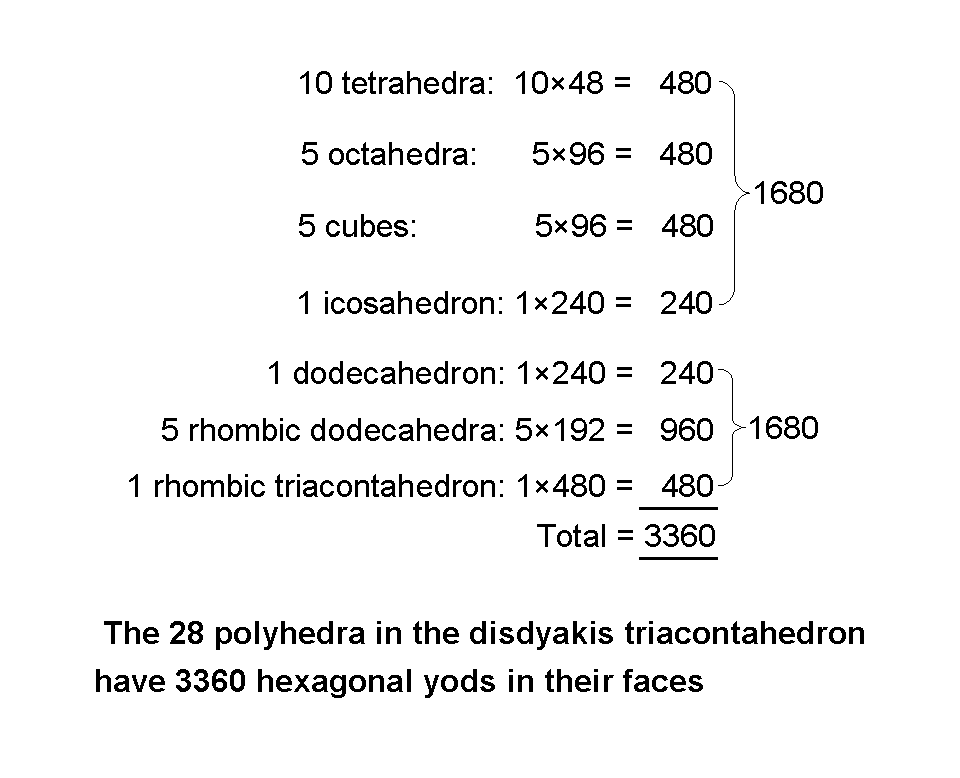
| << Previous 1... 5 6 [7] 8 9 ...18 Next >> |

Suppose that the faces of all the 28 Platonic & Catalan solids in the disdyakis triacontahedron are divided into their sectors, which are then converted into tetractyses. Their hexagonal yods all occupy different points in space, as only corners of tetractyses can be shared by different polyhedra if they are vertices of polyhedra as well. The tetrahedron has 48 hexagonal yods in its four faces, the octahedron has 96 hexagonal yods in its eight faces, the cube has 96 hexagonal yods in its six faces, the icosahedron has 240 hexagonal yods in its 20 faces, the dodecahedron has 240 hexagonal yods in its 12 faces, the rhombic dodecahedron has 192 hexagonal yods in its 12 faces and the rhombic triacontahedron has 480 hexagonal yods in its 30 faces. The 232 faces of all 28 polyhedra have 3360 hexagonal yods. Compare this with the inner Tree of Life: 120 yods lie on the 42 sides of each set of seven enfolded polygons. Therefore, the number of yods outside the root edge that lie on the sides of both sets of seven enfolded polygons = 2×(120–4) = 2×116 = 232. This is evidence that the 28 polyhedra constitute a holistic system, as would be expected, since the disdyakis triacontahedron is the outer form of the Polyhedral Tree of Life. As 336 is the number of helical turns making up one revolution of a whorl of the superstring around its axis of spin, 3360 is the number of helical turns per revolution of all ten whorls of the superstring. Its holistic character is therefore self-evident. The disdyakis triacontahedron embodies this fundamental structural parameter of the subquark state of the E8×E8 heterotic superstring. This property is one of the most amazing of the many features of sacred geometries analyzed in this website. It is a truly spectacular example of how they embody a number that characterizes the form of their subatomic realization — the subquark state of the E8×E8 heterotic superstring.
The 21 Platonic solids of the first four types have 1680 hexagonal yods in their faces and the seven remaining Catalan solids that the disdyakis triacontahedron can accommodate have 1680 hexagonal yods as well. Exhibited here is (apart from the tetractys factor of 10) the primary division: 336 = 168 + 168 that is characteristic of sacred geometries. It manifests in the E8×E8 heterotic superstring described by Besant & Leadbeater as the 168 helical turns ("1st-order spirillae") in an outer or inner half-revolution of a whorl (see Occult Chemistry).
| << Previous 1... 5 6 [7] 8 9 ...18 Next >> |